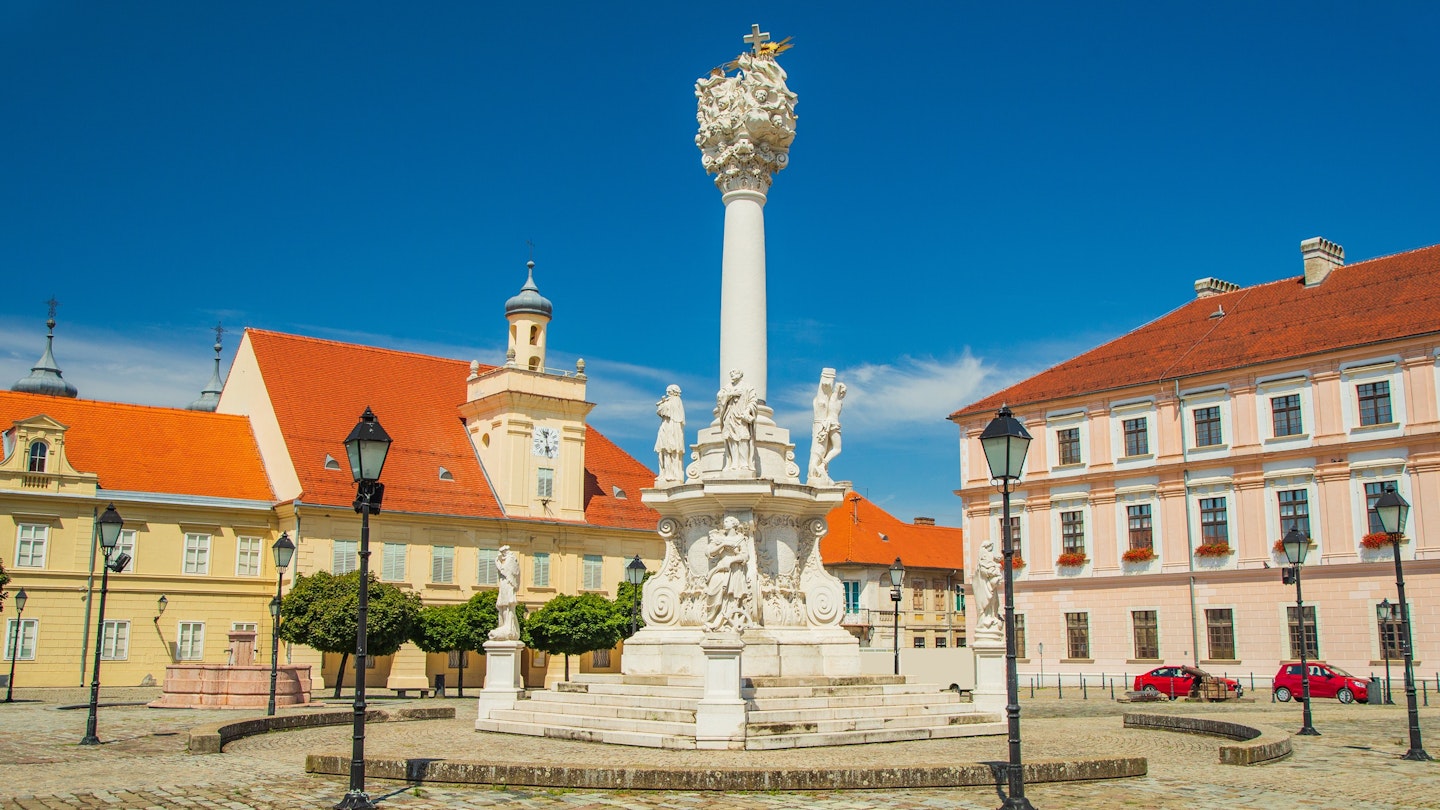Croatia’s long, stunning coastline is no secret to travelers across the globe, but those looking for culture and gastronomy should head inland to Slavonia.
Slavonia is a hidden gem in the northeastern part of the country, that was once submerged under the Pannonian Sea – in fact, Croatia’s first geopark, Papuk, is one of the remnants of the Pannonian islands.
Slavonia is one of four historical and cultural regions in Croatia and provides rare insight into early European civilization. Here’s four fascinating things to do in this vibrant region:
Visit the Vučedol Culture Museum

Located on the bank of the Danube River 3.5 miles from Vukovar, the Vučedol Culture Museum (Muzej Vučedolske Kulture) is dedicated to the prehistoric population living in the area during the Eneolithic period – the Copper and Bronze Ages – from 3000 B.C. to 2500 B.C. Such remarkable historical parallels can be drawn with major global civilizations, as this era coincided with the construction of the Egyptian pyramids and the founding of the ancient city of Troy.
At the museum, learn about the first Indo-European Vučedol house, the oldest prehistoric four-wheel cart, and the first Indo-European calendar based on winter sky observations. Furthermore, you will discover the prehistoric foundations of the first metal production, including the world’s first bronze and the earliest known saw.
The museum’s themed rooms delve into various aspects, including geology, livestock breeding, farming, hunting, weaving, handcrafts, metallurgy, and ceramics. Additionally, visitors can enjoy hands-on experiences and interactive audio-visual aids via a free smartphone app for iPhone and Android.
Sample the Regional Cuisine of Baranja

There’s a popular saying in the area that roughly translates to “Everything can happen to you in Slavonia and Baranja, but you will never go hungry or thirsty.” Known for its savory dishes and generous portions, this region features many highly rated restaurants serving the traditional cuisine of Baranja. Sample the rich regional offerings, which often highlight catfish, carp, pork, beef, potatoes, and fresh vegetables.
One notable dish is Drunken Carp (pijani šaran), prepared by cleaning the fish, salting it, stuffing it with garlic, and baking it in a mixture of lemon juice, wine, oil, and rosemary. Čobanac, another local favorite, is a hearty meat stew, traditionally slow-cooked for hours in large copper pots over open flames, melding various meats like veal and beef with onions and paprika.
Moreover, you may notice a Hungarian influence in Slavonia and Baranja’s culinary landscape, attributable to the region’s historical ties to the Austro-Hungarian empire. Ingredients like paprika, lard, black pepper, and garlic are frequently employed.
Tour Vukovar’s 18th-century Eltz Palace

Eltz Palace was constructed in the mid-1700s during the Habsburg Empire by Philipp Karl von Eltz-Kempenich, the Archchancellor of the Holy Roman Empire. His family inhabited this historic site until its confiscation in 1944 during World War II.
The museum, established in 1948, housed the collection of the Vukovar Town Museum but suffered destruction in 1991 during the Croatian War of Independence. Following extensive renovations, the palace reopened in 2015 as the Vukovar City Museum and Eltz Castle Complex, thanks to support from the Government of the Republic of Croatia and the Council of Europe Development Bank Project.
Located on the Danube’s banks, the building is recognized as one of the finest examples of Baroque architecture in Croatia. Visitors are invited to explore four floors filled with artifacts, ranging from mammoth fossils to Bronze Age tools. Additionally, a compelling video exhibit showcases the siege of Vukovar and the town’s devastating historical events.
Guests can view some of the original living spaces of the Eltz family along with a curated collection that reflects Vukovar’s rich history, including stunning paintings, antique furniture, and period clothing. Guided tours in English are available daily.
Taste Some of Ilok’s Finest Wines

Situated on the hill of Fruška Gora and positioned along the banks of the Danube, the medieval town of Ilok represents the easternmost locale in Croatia and serves as a burgeoning destination for wine enthusiasts.
Ilok features many vineyards that produce renowned Chardonnays, Rieslings, Pinot whites, and Gewürztraminer varietals. Visitors can choose from full-day or half-day tours along The Ilok Wine Road to visit family-owned wineries, stroll through scenic vineyards, and sample unique regional flavors.
One highlight is Ilok Castle, also known as Odescalchi Castle, built in the 15th century by Nicholas of Ilok. Explore the 500-year-old underground wine cellars and the adjacent Museum of the Town of Ilok, where you’ll discover large oak casks and wine collections nearing 40 years of age, along with compelling stories highlighting efforts to preserve vintage wines during the tumultuous 1991 war.
After your engaging tour and enriching wine tasting, be sure to dine at the connected restaurant, which boasts a grand historical dining hall and serves exceptional local fish paprika dishes.
Sponsored by Croatian National Tourist Board
As a travel entertainment and inspirational media outlet, we sometimes incorporate brand sponsors into our efforts. This activity is clearly labeled across our platforms.
This story was crafted collaboratively between Croatian National Tourist Board and GoTravelDaily. Both parties provided research and curated content to produce this narrative. We disclose when information isn’t ours.





